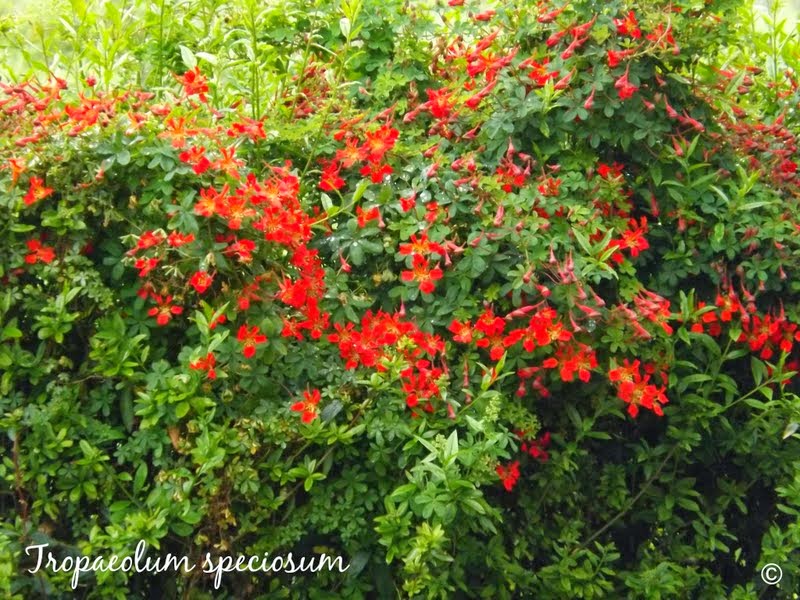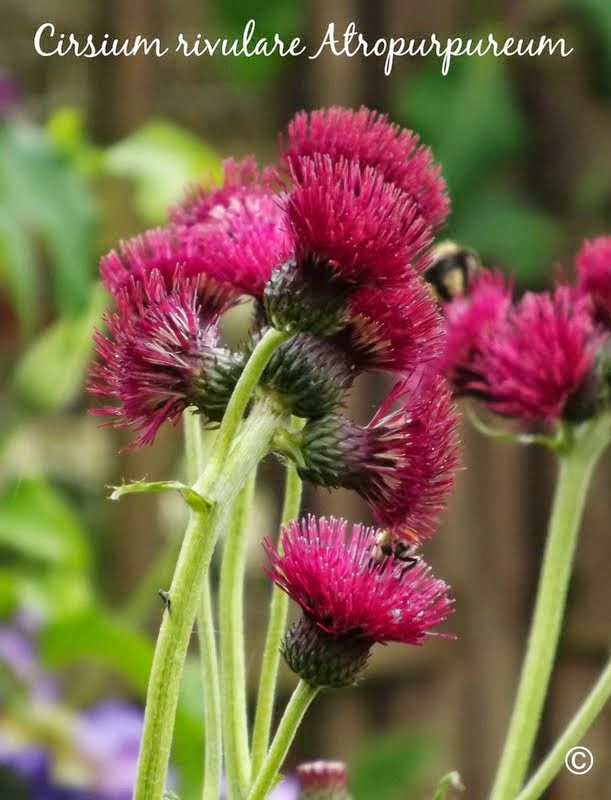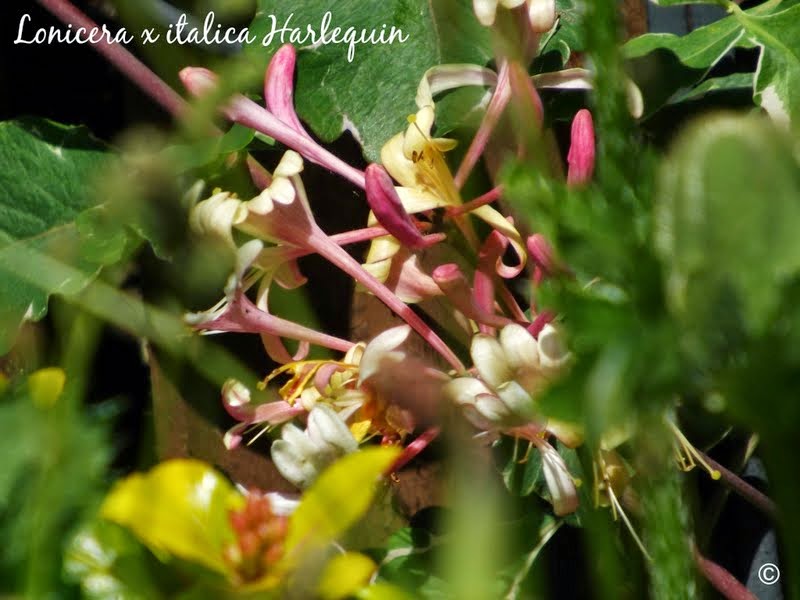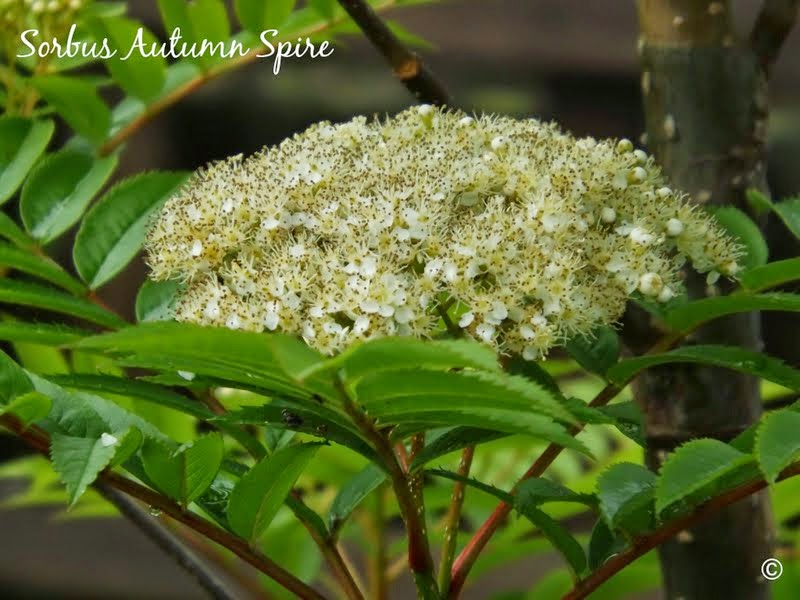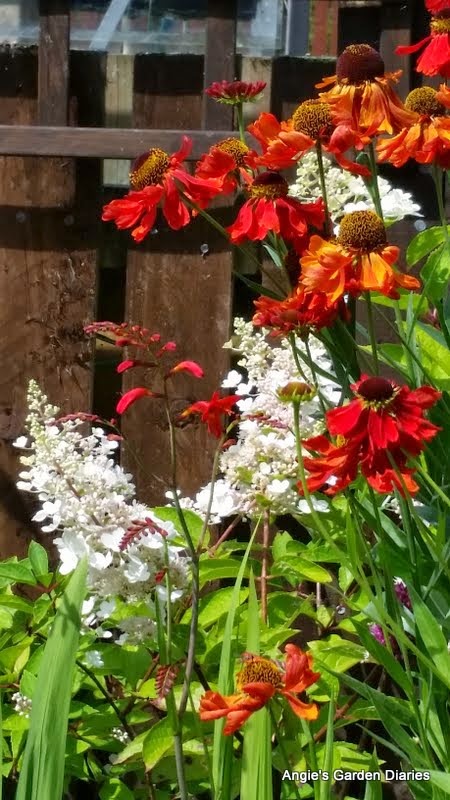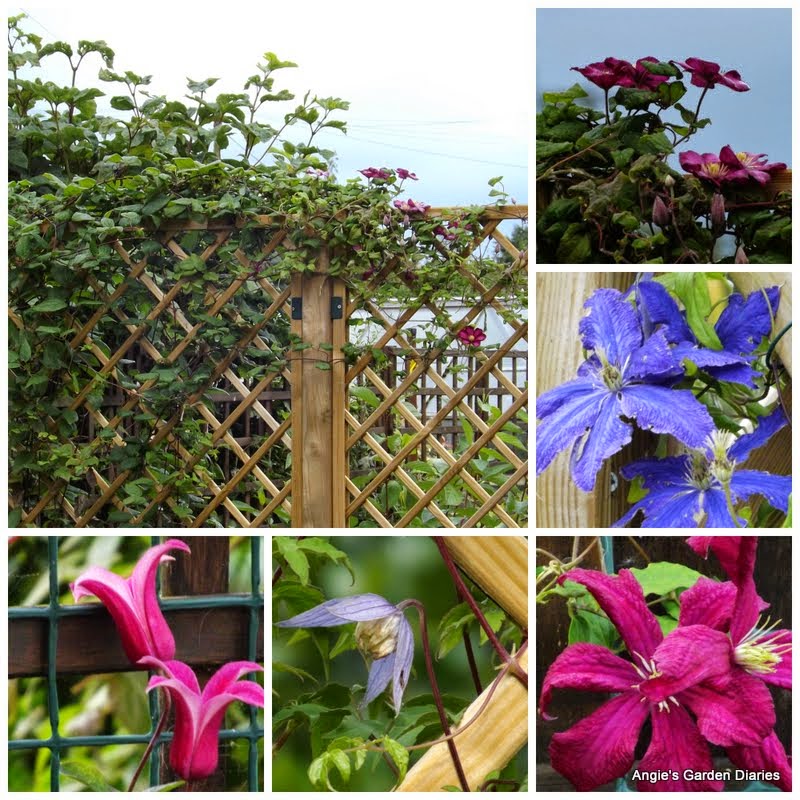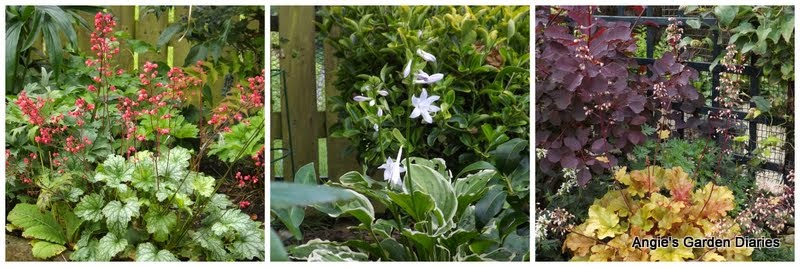You bet it was!
When my brother moved into his house back in 2010, he had a reasonably well stocked garden. Very little of it too my taste and certainly not his! He doesn't do gardens! End off! There was a raised bed in his back garden that looked like it hadn't been touched in years, it was over run with all sorts. In amongst the weeds, Japanese anemones and the cornflowers (centaurea montana) and many more were some huge clumps of Iris - bearded Iris judging by the size of the sword like foliage I told myself. I'm no Iris expert, far from it - they could have been anything really but that was my guess and I was sticking by it.
He announced that this was the spot his shed was going into and if I wanted anything, I'd best take it soon because it's all coming out! Without any consideration (at that time I knew no better) I came armed with spade and fork first thing the following morning. Some of the clumps were so large they were almost impossible to lift. My only choice was to slice through what I could and take a piece of each, leaving him with the impossible job of getting the rest out.
The only piece of knowledge I had concerning Iris was that they like sun - yep, sun! That was it. A quick internet search then told me they needed to be planted on the surface in order their Rhizomes bake in the hot sun. That made sense, when I considered how near to the surface they were when I attempted to lift them. When I got them home, I chose a sunny spot in the back garden and lifted some turf. Dug over the entire area and proceeded to plonk them on, rather than in! I covered the roots and firmed them in. Ensuring the rhizomes were still on the surface. I religiously watered for the remainder of the summer. They hadn't died and had began sprouting some new foliage. Autumn and winter came and went - come springtime I was confident they were still alive. As the year went on, sadly they produced no flowers but they were still alive. Maybe next year - I kept telling myself.
Jump forward to late spring 2012, they looked ever so healthy and as we moved towards May, dare I hope for flowers? Let me tell you, the suspense was killing me! May turned to June and still no flowers - disappointment again! To say I was gutted is a bit of an understatement. But they weren't dead - the voices in my head kept telling me that was a good thing. Then it happened! The wet summer of 2012 rolled in - the spot I had chose for the Iris flooded. I watched for weeks as the plants were drowning in front of my very eyes. I lifted what I could and potted as many of the shrubs as I had large enough pots for. I was determined I was not going to loose those Iris - I had brought them through this far, I wasn't going to let a bit of wet weather beat me. By this time - I knew that my front garden had far better drainage than the back garden. Perhaps I should give them a go round them. As I dug them from the ground, that big slurping sound haunted me as I put the fork underneath them - I lay them in my neighbours greenhouse for a couple of days to dry out. Rightly or wrongly, I'll never know but when I went back to look at them, some of them were pretty rotten and mushy and of course, I think what roots they did have were left in the ground when I removed them. With nothing left to lose I re planted them in the front garden - where they were left to their own devices. If they were meant to be then they would survive. Nothing ventured, nothing gained! Over the ensuing weeks, they got worse instead of better and any foliage that remained all but died right back. They've had it I told myself and I completely forgot all about them.
Last year, 2013 - we had a wonderful summer here in Edinburgh. One of the driest on record and I was amazed to see that some of the rhizomes had dared to put out some foliage. Yet again, these Iris had my hopes raised - they certainly know how to keep a girl (well, not quite a girl) on tenterhooks. Sadly again, no flowers. I gave them the good old talking too - you know the one. Either buck up your ideas or your out of here. I always think that odd because 9 times out of 10 it works.
I know I've kept you all on tenterhooks, I wanted to add to the effect and of course share with you just how great it feels to finally have some Iris flowers.
Back at the beginning of May, the largest clump had started to send up a few flower stems - had my perseverance, prayer and patience paid off, you bet! Look what I got
This Lemon/White flower was not alone - sadly unscented but you can't deny their beauty, well I can't that's for sure.
Further along the bed a couple of more rhizomes began sending up single flower stems - I dared to get excited. I kept my beady eye on them every single day.
Down by the front gate - we have another, identical it may be, I don't care - I'm just so pleased some of them have flowered.
We have twins - no, change that, we have triplets! Can you see it? You can just make it out. I must have missed a piece of rhizome when I was taking them out. This one is special - it's totally swamped by the surrounding plants. As you can see - this bed is now planted with moisture lovers, Trollius, Ligularia, Periscaria and Astilbe - just in case the flooding reoccurs but so far, touch wood, it hasn't!
A close up of the flower - this one obviously doesn't read the gardening books, whilst it's in a sunny spot, it certainly can't get baked in the sun - I had a look under the Persicaria it is growing through and I can't see the rhizome at all. It must be completely buried under the roots.
It's a beautiful burgundy colour with white and gold markings and scented too boot! I might never find out it's name - not that it matters, I'm hoping it's here to stay.
There are still many more rhizomes with leaf only, they are sorry pathetic looking things but hopefully given enough time, I'll have a few more to add to the collection.
When my brother moved into his house back in 2010, he had a reasonably well stocked garden. Very little of it too my taste and certainly not his! He doesn't do gardens! End off! There was a raised bed in his back garden that looked like it hadn't been touched in years, it was over run with all sorts. In amongst the weeds, Japanese anemones and the cornflowers (centaurea montana) and many more were some huge clumps of Iris - bearded Iris judging by the size of the sword like foliage I told myself. I'm no Iris expert, far from it - they could have been anything really but that was my guess and I was sticking by it.
He announced that this was the spot his shed was going into and if I wanted anything, I'd best take it soon because it's all coming out! Without any consideration (at that time I knew no better) I came armed with spade and fork first thing the following morning. Some of the clumps were so large they were almost impossible to lift. My only choice was to slice through what I could and take a piece of each, leaving him with the impossible job of getting the rest out.
The only piece of knowledge I had concerning Iris was that they like sun - yep, sun! That was it. A quick internet search then told me they needed to be planted on the surface in order their Rhizomes bake in the hot sun. That made sense, when I considered how near to the surface they were when I attempted to lift them. When I got them home, I chose a sunny spot in the back garden and lifted some turf. Dug over the entire area and proceeded to plonk them on, rather than in! I covered the roots and firmed them in. Ensuring the rhizomes were still on the surface. I religiously watered for the remainder of the summer. They hadn't died and had began sprouting some new foliage. Autumn and winter came and went - come springtime I was confident they were still alive. As the year went on, sadly they produced no flowers but they were still alive. Maybe next year - I kept telling myself.
Jump forward to late spring 2012, they looked ever so healthy and as we moved towards May, dare I hope for flowers? Let me tell you, the suspense was killing me! May turned to June and still no flowers - disappointment again! To say I was gutted is a bit of an understatement. But they weren't dead - the voices in my head kept telling me that was a good thing. Then it happened! The wet summer of 2012 rolled in - the spot I had chose for the Iris flooded. I watched for weeks as the plants were drowning in front of my very eyes. I lifted what I could and potted as many of the shrubs as I had large enough pots for. I was determined I was not going to loose those Iris - I had brought them through this far, I wasn't going to let a bit of wet weather beat me. By this time - I knew that my front garden had far better drainage than the back garden. Perhaps I should give them a go round them. As I dug them from the ground, that big slurping sound haunted me as I put the fork underneath them - I lay them in my neighbours greenhouse for a couple of days to dry out. Rightly or wrongly, I'll never know but when I went back to look at them, some of them were pretty rotten and mushy and of course, I think what roots they did have were left in the ground when I removed them. With nothing left to lose I re planted them in the front garden - where they were left to their own devices. If they were meant to be then they would survive. Nothing ventured, nothing gained! Over the ensuing weeks, they got worse instead of better and any foliage that remained all but died right back. They've had it I told myself and I completely forgot all about them.
Last year, 2013 - we had a wonderful summer here in Edinburgh. One of the driest on record and I was amazed to see that some of the rhizomes had dared to put out some foliage. Yet again, these Iris had my hopes raised - they certainly know how to keep a girl (well, not quite a girl) on tenterhooks. Sadly again, no flowers. I gave them the good old talking too - you know the one. Either buck up your ideas or your out of here. I always think that odd because 9 times out of 10 it works.
I know I've kept you all on tenterhooks, I wanted to add to the effect and of course share with you just how great it feels to finally have some Iris flowers.
Back at the beginning of May, the largest clump had started to send up a few flower stems - had my perseverance, prayer and patience paid off, you bet! Look what I got
| Unknown Iris |
Further along the bed a couple of more rhizomes began sending up single flower stems - I dared to get excited. I kept my beady eye on them every single day.
Down by the front gate - we have another, identical it may be, I don't care - I'm just so pleased some of them have flowered.
We have twins - no, change that, we have triplets! Can you see it? You can just make it out. I must have missed a piece of rhizome when I was taking them out. This one is special - it's totally swamped by the surrounding plants. As you can see - this bed is now planted with moisture lovers, Trollius, Ligularia, Periscaria and Astilbe - just in case the flooding reoccurs but so far, touch wood, it hasn't!
A close up of the flower - this one obviously doesn't read the gardening books, whilst it's in a sunny spot, it certainly can't get baked in the sun - I had a look under the Persicaria it is growing through and I can't see the rhizome at all. It must be completely buried under the roots.
It's a beautiful burgundy colour with white and gold markings and scented too boot! I might never find out it's name - not that it matters, I'm hoping it's here to stay.
There are still many more rhizomes with leaf only, they are sorry pathetic looking things but hopefully given enough time, I'll have a few more to add to the collection.
| Many more like these in the garden |
I know there are many of you that successfully grow Iris, if you can offer any tips, I'd be really grateful. Would you recommend feeding them, if so what do you use? I know they aren't in a particularly roomy spot for them but in my hurry to rescue them I didn't give room much of a thought!
